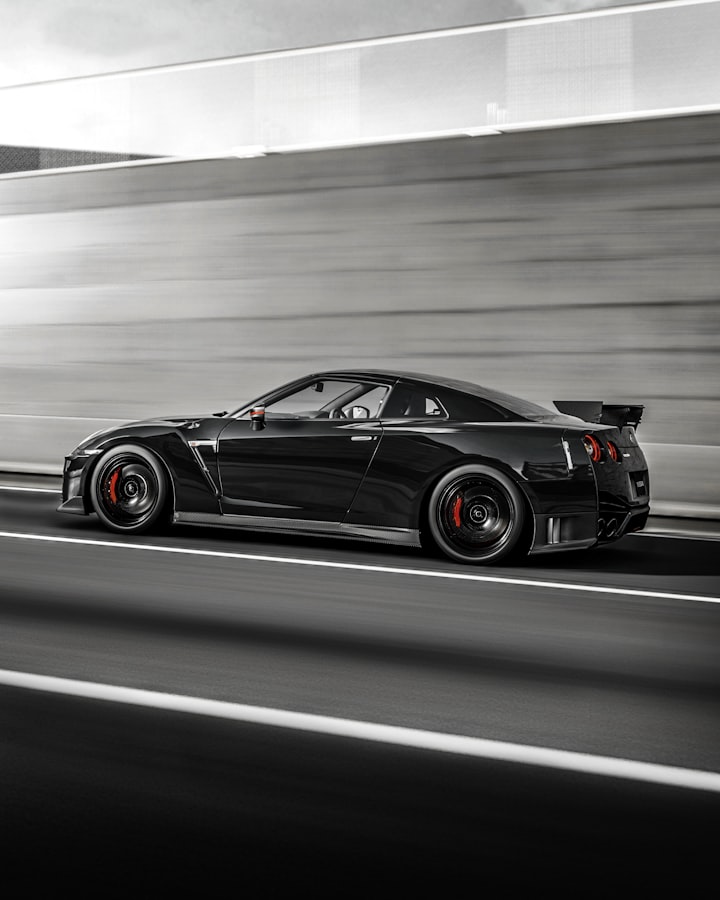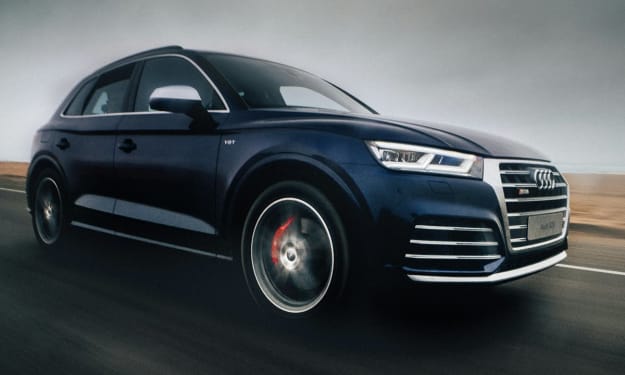
Introduction:
When it comes to automotive legends, the Nissan GT-R stands tall among the giants. Born from a rich racing heritage and a relentless pursuit of perfection, the GT-R has become synonymous with uncompromising performance, cutting-edge technology, and unrivaled driving pleasure. In this article, we delve into the captivating world of the Nissan GT-R, exploring its history, engineering prowess, and the driving experience it offers.
A Rich Racing Heritage:
The roots of the GT-R can be traced back to the racing circuits of Japan, where Nissan established a reputation for motorsport dominance. It was in 1969 when the first GT-R, known as the Skyline GT-R, was introduced, showcasing a blend of power, handling, and aerodynamics. Over the years, the GT-R nameplate evolved, but the essence of the car remained intact—a vehicle designed to excel on both the racetrack and the streets.
Exhilarating Performance:
At the heart of every GT-R lies an engineering marvel. The latest iteration of this supercar is powered by a twin-turbocharged 3.8-liter V6 engine, handcrafted by a Takumi technician, a master craftsman renowned for their exceptional skill. With its relentless power delivery, the GT-R generates awe-inspiring performance figures, capable of launching from 0 to 60 mph in blistering times of under three seconds. The vehicle's advanced all-wheel-drive system, coupled with a refined suspension setup, ensures extraordinary grip and precise handling, making it a true corner-carving machine.
Advanced Technology:
The GT-R not only relies on sheer power but also leverages cutting-edge technology to maximize performance. One standout feature is the sophisticated ATTESA E-TS (Advanced Total Traction Engineering System for All-Terrain with Electronic Torque Split) all-wheel-drive system. It constantly monitors various parameters such as wheel speed, steering angle, and yaw rate to distribute torque efficiently and deliver exceptional stability and control. The state-of-the-art Vehicle Dynamics Control (VDC) system further enhances the driving experience by fine-tuning the power distribution and braking for optimal performance in diverse conditions.
Iconic Design:
The GT-R's design is a perfect fusion of form and function, captivating enthusiasts worldwide. Its aggressive stance, aerodynamic contours, and signature quad circular taillights create an unmistakable presence on the road. The aerodynamic enhancements, such as a rear spoiler and vents, not only enhance the car's visual appeal but also improve high-speed stability and cooling efficiency. Inside the cockpit, the driver-centric layout immerses you in a world of performance, with a combination of luxurious materials, cutting-edge technology, and a race-inspired instrument cluster.
Continual Evolution:
Since its inception, the GT-R has undergone constant evolution to stay at the forefront of automotive innovation. Nissan has released several special editions and performance upgrades, each pushing the boundaries of what is possible. These advancements have enabled the GT-R to achieve remarkable lap times on the legendary Nürburgring Nordschleife, solidifying its status as a supercar capable of challenging the best in the world.
Conclusion:
The Nissan GT-R has earned its place in the pantheon of automotive greats through its exceptional performance, advanced technology, and relentless pursuit of perfection. From its racing heritage to its exhilarating performance on the road, the GT-R encapsulates the spirit of a true supercar. Whether you're an adrenaline-seeking speed enthusiast or simply admire automotive engineering mastery, the Nissan GT-R is an awe-inspiring machine that continues to captivate and redefine what's possible in the world of high-performance automobiles.
Engine
The VR38DETT engine.
See also: Nissan VR engine
The Nissan GT-R is powered by the VR38DETT engine, a 3,799 cc (3.8 L; 231.8 cu in) 60° degree DOHC V6 engine with plasma transferred wire arc sprayed cylinder bores.[61][37] Two parallel Ishikawajima-Harima (IHI) turbochargers provide forced induction.[62] Models manufactured between 2007 and 2009 were rated at a manufacturer-claimed engine output of 353 kW (473 hp) at 6,400 rpm and 583 N⋅m (430 lb⋅ft) at 3,200–5,200 rpm.[61] The engine also meets California Air Resources Board Ultra Low Emission Vehicle (ULEV) standards.[61] The VR38DETT features 24 valves controlled by dual overhead camshafts (2 per cylinder head) with intake only variable valve timing. The engine block is made out of cast aluminium with 0.15 mm (0.0059 in) plasma-sprayed cylinder liner bores. This coating provides a hard protective layer which reduces friction for the piston rings to slide on when the piston moves up and down during the power cycle. The IHI turbocharger's turbine housing is integrated into the exhaust manifolds to decrease weight and improve vehicle balance. This engine also features a pressurized lubrication system controlled thermostatically. The VR38DETT has a feedback control system which changes air fuel ratio depending on the engine load which reduces fuel consumption. Fully equipped with catalytic converters, turbochargers, all of the engine accessories, front differential assembly and turbo outlet pipes, the engine weighs 276 kg (608 lb).[63] Notable features of the VR38DETT includes,
Continuously variable valve timing control system (CVTCS) on intake valve.
Aluminium cylinder block with high-endurance/low-friction plasma-sprayed bores.
Iridium-tipped spark plugs.
Electronic drive-by-wire throttle.
Multi port fuel injection.
Pressurized lubrication system with thermostatically controlled cooling and magnesium oil sump.
Fully symmetrical dual intake and low back-pressure exhaust system.
Secondary air intake system to rapidly heat catalysts to peak cleaning efficiency.
50 State LEV2/ULEV.
Nissan GT-R engine note
0:08
Problems playing this file? See media help.
The engines are hand built by only five trained mechanics called "Takumi Craftsmen" in a dust proof, temperature controlled room at Nissan's Yokohama plant. The names of these built are badged on every GT-R engine. Each engine takes approximately 8.3 hours for the 300 components to be fully assembled. Approximately 13 engines are built every day in a single shift. The cars are built at Tochigi plant on a shared production line. Before the production finalization, every single GT-R is test driven by a professional driver around Nissan's test track.[64][65][66][67][68]
Model Year Output Torque Source
CBA–R35 2007–2009 353 kW (480 PS; 473 hp)
at 6,400 rpm 583 N⋅m (430 lb⋅ft)
at 3,200–5,200 rpm [61]
2009–2010 357 kW (485 PS; 478 hp)
at 6,400 rpm 588 N⋅m (434 lb⋅ft)
at 3,200–5,200 rpm [69][70]
DBA–R35 2010–2012 390 kW (530 PS; 523 hp)
at 6,400 rpm 607 N⋅m (448 lb⋅ft)
at 3,200–5,200 rpm [71]
2012–2016 405 kW (550 PS; 542 hp)
at 6,400 rpm 628 N⋅m (463 lb⋅ft)
at 3,200–5,800 rpm [72][73][74][75]
4BA–R35 2016–present 416 kW (565 PS; 557 hp)
at 6,800 rpm 633 N⋅m (467 lb⋅ft)
at 3,300–5,800 rpm [76][77][78][79][80]
Drivetrain
ATTESA E-TS all-wheel-drive system
See also: ATTESA E-TS
The GT-R was the first rear mounted independent transaxle all-wheel-drive vehicle.[81] The transmission is an exclusively developed, rear mounted, six-speed BorgWarner designed GR6Z30A type dual-clutch automatic transmission.[82] These units are hand built by Takumi Craftsmans in a specialized room, similar to the engine assembly room at Nissan's Aichi Kikai plant in Nagoya. This transmission is one of the fastest shifting in a production vehicle, as it shifts gears in just 0.15–0.2 seconds. This particular DCT gearbox is used in conjunction with the unique ATTESA E-TS system to provide power to all four wheels, along with Nissan's Vehicle Dynamics Control (VDC) to aid in stability.[83][84] Three shift modes can be selected from the drive mode selector for various conditions: "R-mode" allows for maximum performance of the six-speed dual-clutch transmission, the "Normal-mode" is recommended for normal daily drives, and the "Save-mode" is recommended for maximizing fuel economy, as well as for driving on slippery surfaces, such as on snow or ice.[61]
The ATTESA ET-S all-wheel-drive system was an updated version of the ATTESA E-TS Pro, was used in older Skyline GT-R models. This was a rear biased all-wheel-drive system, helping the GT-R for its incredible handling and stability at high speeds. In normal conditions, this system provides 100 percent power to the rear wheels through the main carbon-composite propeller shaft. In conditions where limited traction is available to the rear wheels, such as heavy acceleration and cornering, the separated additional propeller shaft sends torque from the transfer case to the front differential, resulting in a 50:50 front to rear power distribution. The rear differential and transmission are built as a single component called a transaxle. An open type differential distributes power in the front, and a 1.5 way multi-disc mechanical limited slip differential does so in the rear. In addition to these mechanical components, the GT-R is also capable of automatically braking either of the front wheels when slip is detected in order to send power to the other front wheel, so as to mimic the functionality of a mechanical limited slip differential.Engine
The VR38DETT engine.
See also: Nissan VR engine
The Nissan GT-R is powered by the VR38DETT engine, a 3,799 cc (3.8 L; 231.8 cu in) 60° degree DOHC V6 engine with plasma transferred wire arc sprayed cylinder bores.[61][37] Two parallel Ishikawajima-Harima (IHI) turbochargers provide forced induction.[62] Models manufactured between 2007 and 2009 were rated at a manufacturer-claimed engine output of 353 kW (473 hp) at 6,400 rpm and 583 N⋅m (430 lb⋅ft) at 3,200–5,200 rpm.[61] The engine also meets California Air Resources Board Ultra Low Emission Vehicle (ULEV) standards.[61] The VR38DETT features 24 valves controlled by dual overhead camshafts (2 per cylinder head) with intake only variable valve timing. The engine block is made out of cast aluminium with 0.15 mm (0.0059 in) plasma-sprayed cylinder liner bores. This coating provides a hard protective layer which reduces friction for the piston rings to slide on when the piston moves up and down during the power cycle. The IHI turbocharger's turbine housing is integrated into the exhaust manifolds to decrease weight and improve vehicle balance. This engine also features a pressurized lubrication system controlled thermostatically. The VR38DETT has a feedback control system which changes air fuel ratio depending on the engine load which reduces fuel consumption. Fully equipped with catalytic converters, turbochargers, all of the engine accessories, front differential assembly and turbo outlet pipes, the engine weighs 276 kg (608 lb).[63] Notable features of the VR38DETT includes,
Continuously variable valve timing control system (CVTCS) on intake valve.
Aluminium cylinder block with high-endurance/low-friction plasma-sprayed bores.
Iridium-tipped spark plugs.
Electronic drive-by-wire throttle.
Multi port fuel injection.
Pressurized lubrication system with thermostatically controlled cooling and magnesium oil sump.
Fully symmetrical dual intake and low back-pressure exhaust system.
Secondary air intake system to rapidly heat catalysts to peak cleaning efficiency.
50 State LEV2/ULEV.
Nissan GT-R engine note
0:08
Problems playing this file? See media help.
The engines are hand built by only five trained mechanics called "Takumi Craftsmen" in a dust proof, temperature controlled room at Nissan's Yokohama plant. The names of these built are badged on every GT-R engine. Each engine takes approximately 8.3 hours for the 300 components to be fully assembled. Approximately 13 engines are built every day in a single shift. The cars are built at Tochigi plant on a shared production line. Before the production finalization, every single GT-R is test driven by a professional driver around Nissan's test track.[64][65][66][67][68]
Model Year Output Torque Source
CBA–R35 2007–2009 353 kW (480 PS; 473 hp)
at 6,400 rpm 583 N⋅m (430 lb⋅ft)
at 3,200–5,200 rpm [61]
2009–2010 357 kW (485 PS; 478 hp)
at 6,400 rpm 588 N⋅m (434 lb⋅ft)
at 3,200–5,200 rpm [69][70]
DBA–R35 2010–2012 390 kW (530 PS; 523 hp)
at 6,400 rpm 607 N⋅m (448 lb⋅ft)
at 3,200–5,200 rpm [71]
2012–2016 405 kW (550 PS; 542 hp)
at 6,400 rpm 628 N⋅m (463 lb⋅ft)
at 3,200–5,800 rpm [72][73][74][75]
4BA–R35 2016–present 416 kW (565 PS; 557 hp)
at 6,800 rpm 633 N⋅m (467 lb⋅ft)
at 3,300–5,800 rpm [76][77][78][79][80]
Drivetrain
ATTESA E-TS all-wheel-drive system
See also: ATTESA E-TS
The GT-R was the first rear mounted independent transaxle all-wheel-drive vehicle.[81] The transmission is an exclusively developed, rear mounted, six-speed BorgWarner designed GR6Z30A type dual-clutch automatic transmission.[82] These units are hand built by Takumi Craftsmans in a specialized room, similar to the engine assembly room at Nissan's Aichi Kikai plant in Nagoya. This transmission is one of the fastest shifting in a production vehicle, as it shifts gears in just 0.15–0.2 seconds. This particular DCT gearbox is used in conjunction with the unique ATTESA E-TS system to provide power to all four wheels, along with Nissan's Vehicle Dynamics Control (VDC) to aid in stability.[83][84] Three shift modes can be selected from the drive mode selector for various conditions: "R-mode" allows for maximum performance of the six-speed dual-clutch transmission, the "Normal-mode" is recommended for normal daily drives, and the "Save-mode" is recommended for maximizing fuel economy, as well as for driving on slippery surfaces, such as on snow or ice.[61]
The ATTESA ET-S all-wheel-drive system was an updated version of the ATTESA E-TS Pro, was used in older Skyline GT-R models. This was a rear biased all-wheel-drive system, helping the GT-R for its incredible handling and stability at high speeds. In normal conditions, this system provides 100 percent power to the rear wheels through the main carbon-composite propeller shaft. In conditions where limited traction is available to the rear wheels, such as heavy acceleration and cornering, the separated additional propeller shaft sends torque from the transfer case to the front differential, resulting in a 50:50 front to rear power distribution. The rear differential and transmission are built as a single component called a transaxle. An open type differential distributes power in the front, and a 1.5 way multi-disc mechanical limited slip differential does so in the rear. In addition to these mechanical components, the GT-R is also capable of automatically braking either of the front wheels when slip is detected in order to send power to the other front wheel, so as to mimic the functionality of a mechanical limited slip differential.






Comments
There are no comments for this story
Be the first to respond and start the conversation.